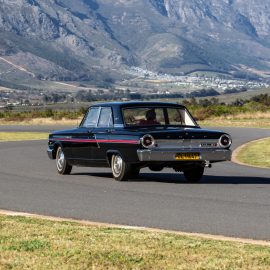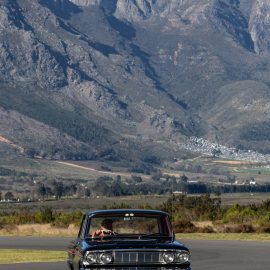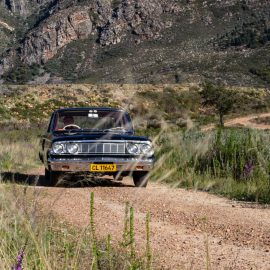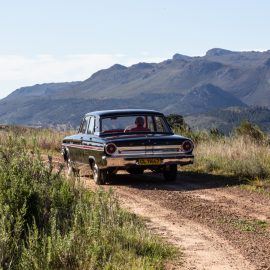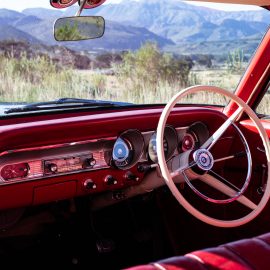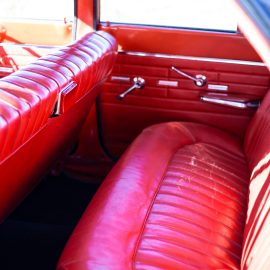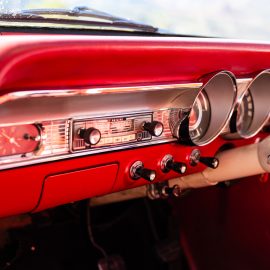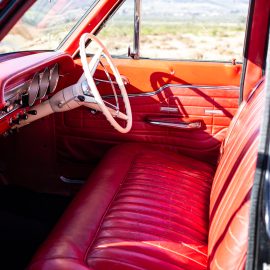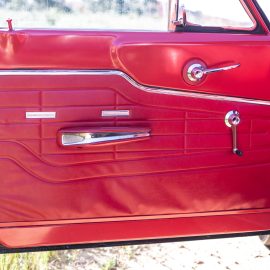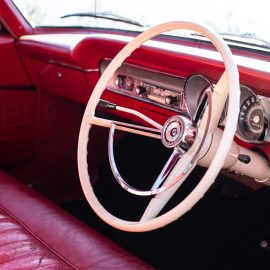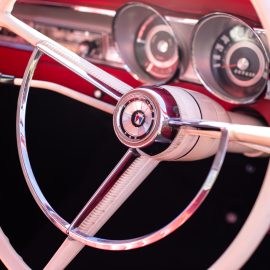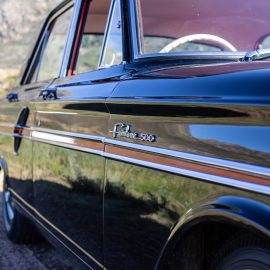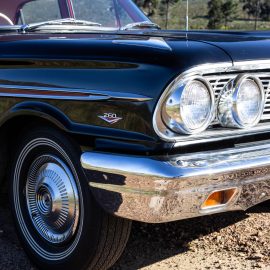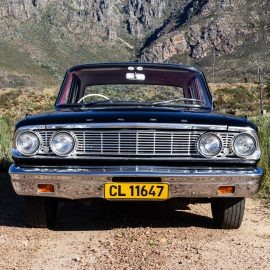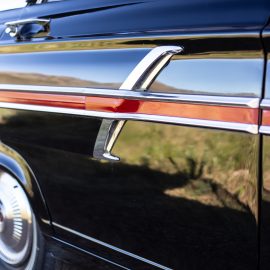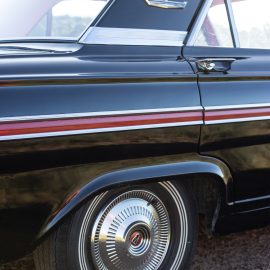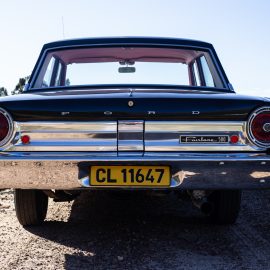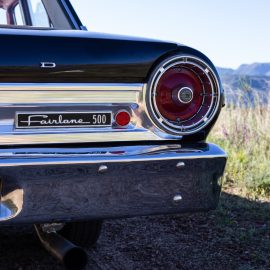
04 Sep Collection In Action: Ford Fairlane
Today’s cars are full of technology, and the more upspec the model the more it contains. Back in the ’60s and ’70s automobiles were far less sophisticated but nonetheless offered plenty of driving pleasure, especially for old-stagers like me.
Mike Monk enjoys a Ford that rekindles old pleasures…
The Ford Fairlane was sold between the 1955 and 1970 model years encompassing seven different generations, and was built in 19 different locations throughout its lifetime. Ford SA assembled Fairlanes in its factory in Port Elizabeth. The Fairlane name derived from Henry Ford’s Dearborn, Michigan estate. Initially introduced as the flagship of the full-size Ford range, throughout its production life the model line would be marketed in a wide variety of body styles, including two- and four-door sedans, two- and four-door hardtops, station wagons, and both traditional and retractable hardtop convertibles. However, following the introduction of the Galaxie in 1959, the Fairlane became Ford’s base model, equivalent to Chevrolet’s Bel Air and Biscayne, until 1962, when it was repackaged as an intermediate-segment (ie mid-size) model.
So it was the fourth-generation Fairlane, introduced for the 1962 model year, which bridged the gap between the compact Falcon and full-size Galaxie in the Ford hierarchy. The Fairlane is a monocoque, but the body incorporated an unusual feature Ford dubbed torque boxes, four boxed structures in the lower body structure designed to absorb road shock by moving slightly in the vertical plane. Suspension was a conventional short/long arm independent arrangement in front, with Hotchkiss drive at the rear. The ’62 Fairlane was initially offered only in two- or four-door sedan body styles.
Living up to its compact categorisation, with an overall length of 5 004 mm and a wheelbase of 2 934 mm, it was 406 mm longer than the Falcon and 312 mm shorter than the Galaxie. Wheel track dimensions varied from 1 355 mm to 1 422 mm depending on model and specification.
The standard engine was the 170ci six, but as an option, Ford offered its new, lightweight small-block Windsor V8, initially with a displacement of 221ci (which was dropped after 1963) followed mid-year with a 260 ci (4 260cc) ‘Challenger’ version with an advertised 164 hp (122 kW) at 4 400 r/min and 350 N.m of torque at a low 2 200. This overhead-valve motor has a compression ratio of 8,8:1 and is fed through a twin-barrel Holley carburettor.
More models were added to the Fairlane range in 1963 and minor interior changes were made. Then for 1964, a new grille and headlight bezels were introduced, new sheet metal was added to the body sides and rear, and the previous tail fins were no more, all of which promoted the model’s burgeoning ‘Total Performance’ image. The line-up comprised six-person two-door and four-door sedans and a two-door station wagon for both the Six and V8 ranges. The line-up for the range-topping Fairlane 500 derivatives consisted of a four-door sedan, two-door Club Sedan and two-door Hardtop Coupe – all six-person – a two-door five person Hardtop Sport Coupe and a four-door Custom Station Wagon. All featured additional chrome and bodyside trim including a twin-spear moulding. The 500 also boasted interior carpeting. Both the Six and 260ci V8 engines were offered. The list of on-cost options was huge.
FMM’s 1964 500 four-door sedan has the V8 motor and a column shift three-speed manual gearbox. Painted black with a red interior, somehow its three-box shape has an air of mystique about it, a promise of delivering more than it shows. For sure, the exterior trim adds a touch of bling, but its boxy, Sixties America persona hides what’s underneath…
Fire it up and the rumbly exhaust note provides an audible hint of something special in store. And so it proves to be. There’s something soothing about driving a car devoid of gimmicks and with enough oomph to provide ample acceleration and effortless cruising – matched with sufficient stopping power, of course. Yes, ride and handling come into the equation too, but one needs to put things into perspective. In general terms, 60 years ago such things were not of the highest order by comparison with today, but the Fairlane offered a relatively sporty package. And for me, this 500 put a smile on my face from the moment I pulled away.
No need to rush things, and the Fairlane responded to all driver inputs with comfortable ease to the background of a classic American V8 soundtrack. With so much torque available, both second and third gears are flexible in delivering motion, yet the 260 was dropped after 1964. Even with a bench front seat, it is comfortable, easy to steer, and offers excellent panoramic visibility with which to enjoy the surroundings. Gently hustle the car through the twisty bits and it responds with grace. It’s a car that makes any journey something to look forward to.
Total Fairlane output for the 1964 model year was 199 522 units. After driving this example, the model line’s period popularity is easy to understand. Bring it on…




